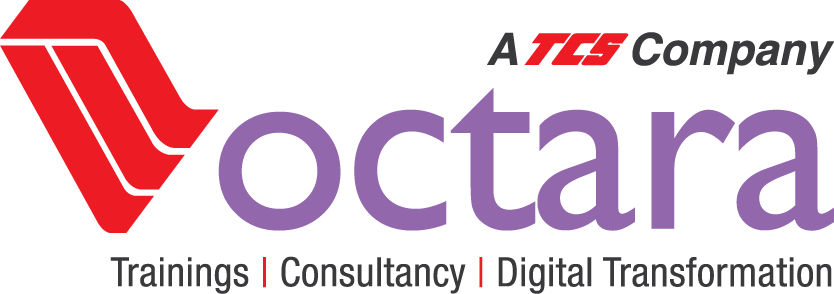
The global workforce is constantly evolving to support a knowledge based, digital economy.
Due to the pace of development, knowledge and skills have short shelf lives and require constant updating and reskilling. This need for a skilled workforce in response to the race to remain competitive has raised the importance of the Learning & Development (L&D) function as integral part of Human Resources (HR).
Investments in personal and professional development now form a crucial part of Human Capital Development. L&D has to go beyond its traditional role in i.e. onboarding and performance management, and play a more strategic role in a more holistic organizational development.
When it comes to hiring new talent from a shrinking talent pool, L&D opportunities within an organization can make the difference between attracting top talent vs. average talent. Many young job seekers list the ability for personal and professional development higher than their salary requirements. An employer brand is no longer just defined by products and services they offer, or their market position. Most ‘employers of choice’ have a solid Learning & Development culture that helps them to attract the best who look beyond just monetary benefits.
The role of L&D in many organizations is still based on the simplistic requirement of x hours of training per employee per year (or a points equivalent) in order to qualify for a positive year-end review and a possible promotion. This is outdated as many organizations today are only willing to retain employees as long as these are able to add value to the business. The ability to add value is closely linked to an employees skills and knowledge being current and relevant. Providing employees with highly relevant and customized training will not only increase productivity, but also attract and retain talent. Companies should make Learning & Development a part of their value based company culture in order to foster an employee mindset towards taking charge of their own path to skills, knowledge, and ultimately employability.
Elevating Learning & Development from a Cost Center to a Strategic Partner
It is important for any organization to re-evaluate their L&D approaches regularly to ensure that they are completely aligned with the overall business and talent strategies. For companies that do not perform at least an annual training needs analysis their L&D functions may be out of sync with the company’s overall objectives. This is often the case because of outdated approaches that are based on historical rather than current needs. To counter this it will be helpful if companies can evaluate their employees on whether they are able to deliver on the company objectives. Assessing skills and capability gaps should be a continuous exercise in any organization and at any level.
To come up with an effective L&D needs analysis, organizations should undergo a systematic and deliberate capability assessment. For example, if an organization has decided to undergo a Digital Transformation Process as one of its business priorities then relevant L&D has to be provided for ALL stakeholders based on the roles they will play in the process, and not training that was deemed important a year ago.
Technologies change at a rate not seen in history, and L&D has to be able to rapidly identify and launch capabilities building programs to address this immediate need.
Given the speed and urgency of the technological evolution, L&D needs to become a strategic partner of the company’s leadership and top executives. This will not only ensure that L&D is closely aligned with the current business objectives, but will enable decision makers to create a long-term L&D vision based on short, medium, and long term business priorities. This way they will also be more willing to commit to a suitable L&D budget and guarantee its funding.
To ensure top management buy-in, L&D initiatives need to positively contribute to the organization’s performance metrics. KPIs need to be identified at which L&D initiatives can be measured. This could include a measurable increase in overall productivity, a positive change in employees behavior and performance, or the improvement of operational processes.
Learning & Development has to adapt to the Times
Traditionally, much of L&D was organized via mandatory and lengthy classroom sessions. With the incorporation of digital tools, employees can perform a lot of the basic learning at their own time, and classroom sessions can be limited to hands-on modules, more in-depth modules and Q&A, thus saving employee time and training funds. Follow-up should always be included to ensure that training objectives are implemented correctly into the relevant work projects.
Peer-to-peer learning, social learning, mentoring and on-the-job training should always be encouraged to become a part of the learning journey.
While there are training objectives within an organization that are only relevant to a small group of employees (i.e. specialized technical training) there are also objectives that are relevant to extended groups or even the whole organization. For example, the earlier mentioned Digital Transformation Process effects every employee within an organization, hence L&D has to ensure that no one is left behind. Programs can be rolled out to a small and specific audience first, and subsequently extended to the whole workforce based on their specific roles in the process. Feedback collected along the way will help to ensure that the training is as relevant as possible for each employee during this scale-up.
With technology trends moving at breakneck speed, the role of Learning & Development is long past just a supporting role within HR. Human Resources itself is changing rapidly, with many of its traditional functions being automated, outsources, or becoming outright obsolete. More and more of HR’s tasks will revolve around providing personalized ‘customer service’, with customer obviously being the organization’s employees. Besides looking after the welfare of the workforce, HR has to ensure employability and peak performance capabilities by providing relevant L&D opportunities for every employee. Learning & Development Leaders have to rise to these challenges and become a strategic partner for the organization to remain agile, adapt and grow.



